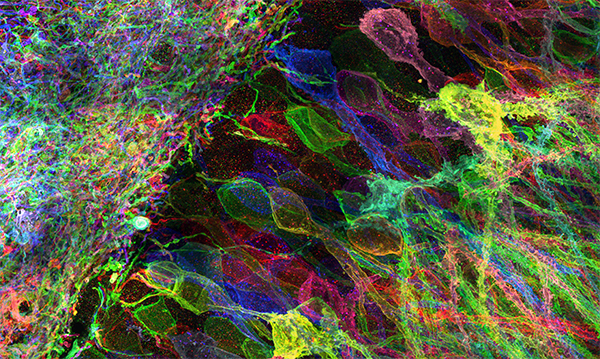Protein-retention expansion microscopy of cells and tissues labeled using standard fluorescent proteins and antibodies
[Publisher Link] [Local Copy]
Tillberg, P.W.*, Chen, F.*, Piatkevich, K.D., Zhao, Y., Yu, C.-C., English, B.P., Gao, L., Martorell, A., Suk, H.-J., Yoshida, F., DeGennaro, E.M., Roossien, D.H., Gong, G., Seneviratne, U., Tannenbaum, S.R., Desimone, R., Cai, D., Boyden, E.S. (2016) Protein-retention expansion microscopy of cells and tissues labeled using standard fluorescent proteins and antibodies, Nature Biotechnology 34:987-992. (*, co-first authors)

Expansion microscopy (ExM) enables imaging of preserved specimens with nanoscale precision on diffraction-limited instead of specialized super-resolution microscopes. ExM works by physically separating fluorescent probes after anchoring them to a swellable gel. The first ExM method did not result in the retention of native proteins in the gel and relied on custom-made reagents that are not widely available. Here we describe protein retention ExM (proExM), a variant of ExM in which proteins are anchored to the swellable gel, allowing the use of conventional fluorescently labeled antibodies and streptavidin, and fluorescent proteins. We validated and demonstrated the utility of proExM for multicolor super-resolution (~70 nm) imaging of cells and mammalian tissues on conventional microscopes.
Note: There is an error in Fig. 1c - the label for the rightmost bar, "Atto9647N" should read "Atto647N".
Resources associated with this Publication:
[Expansion microscopy: physical magnification with nanoscale precision]